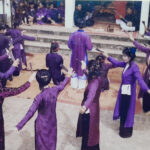Among the intangible cultural heritages of Hanoi, “Do” singing (from Liep Tuyet commune, Quoc Oai district, Hanoi) holds a unique charm no less significant than the traditional musical forms of Ca Tru in Lo Khe or the “Cheo tau” in Tan Hoi. “Do” singing is closely associated with the worship of Saint Tan Vien Son and is gaining increasing attention, spreading within the community.
From the legend of “Do” singing held every 36 years…
Exploring “Do” singing in Liep Tuyet commune, we were introduced by local authorities to the people’s artisan Nguyen Thi Lan – the “living treasure” of “Do” singing in the area and also the Chairwoman of the “Do” Singing Club in Liep Tuyet commune.
According to the people’s artisan Nguyen Thi Lan, the exact origin of “Do” singing is unknown, but it is intertwined with the legend of Saint Tan Vien Son. In ancient times, Saint Tan Vien Son came to Lap Ha (modern-day Liep Tuyet), where he observed a sparsely populated area with people unfamiliar with farming practices, resulting in frequent crop failures. Witnessing this, he decided to stay in the village, sought out good buffalo breeds, high-quality rice, and plant varieties, and then taught the locals how to cultivate and farm.
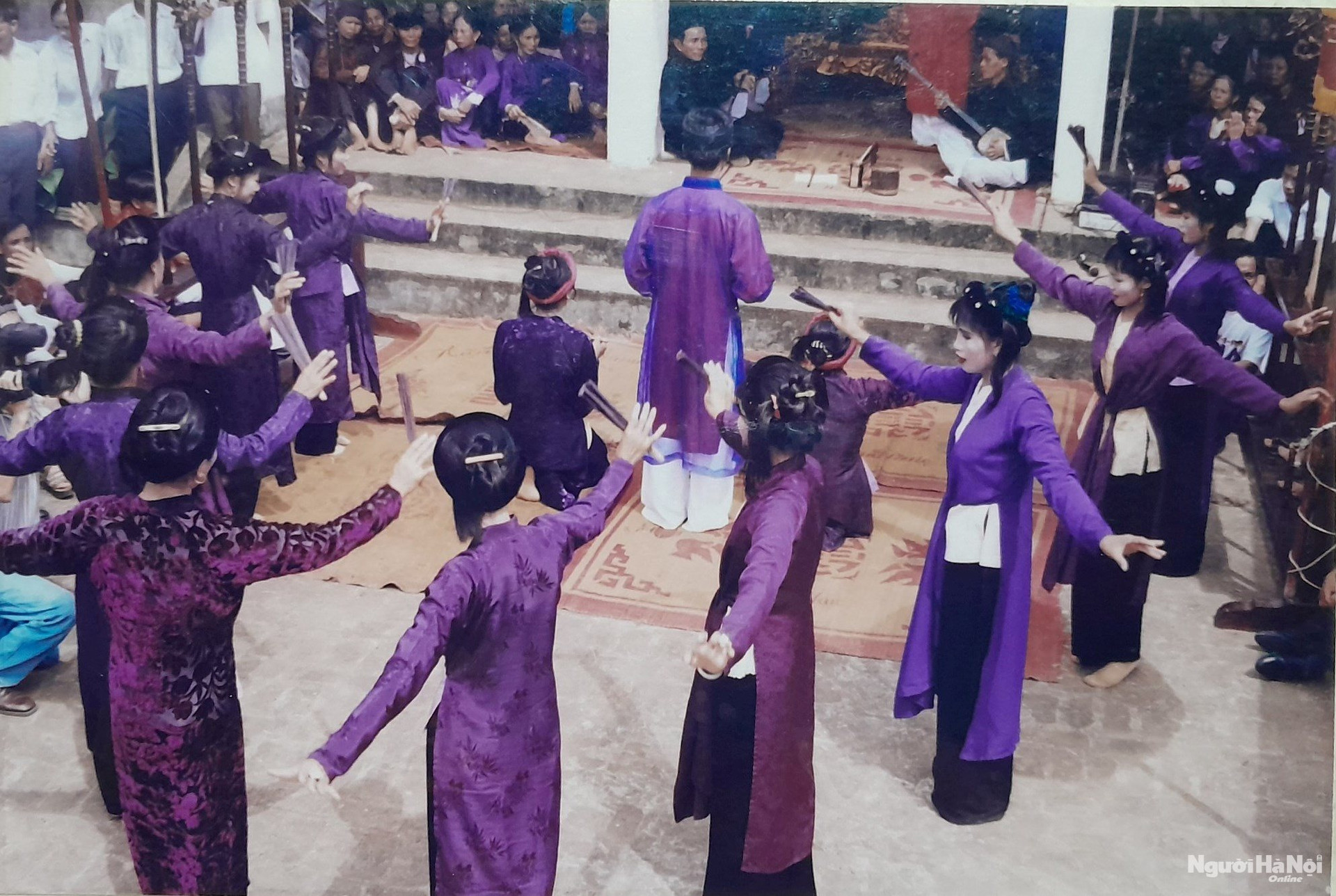
Residential Performance of “Do” Singing at the Khanh Xuan Temple Festival. (Photo documentation provided by the source).
With all matters settled, Saint Tan Vien Son departed from the village, promising to return when the rice fields ripened. After an anxious wait, it took 36 years for the villagers to witness his return. By this time, the villagers had mastered agriculture, enjoying abundant harvests with their granaries full. Upon returning, Saint Tan Vien Son observed the prosperity and warmth in the villagers’ lives. He entered the houses of unmarried young men and women, selecting them to teach the art of “Do” singing. The villagers organized a spiritual festival, and afterwards, Saint Tan Vien Son departed, never to return. In response, the villagers erected the Khanh Xuan Temple in the front part of the village, also known as Xuan Ca Cong.
On the 10th day to the Full Moon of the first lunar month, the villagers host the “Do” Singing Festival at the temple to honor the virtues of Saint Tan Vien Son. As the “Do” Singing Festival concludes, the residents carefully pack away their scarves, garments, fans, bags, and even songbooks into storage. It takes another 36 years until the “Do” Singing Festival is revived, prompting the residents to retrieve their stored items for the next performance. The last “Do” Singing Festival in Liep Tuyet occurred in 1926, succumbing to the disruptions of war and various external factors.
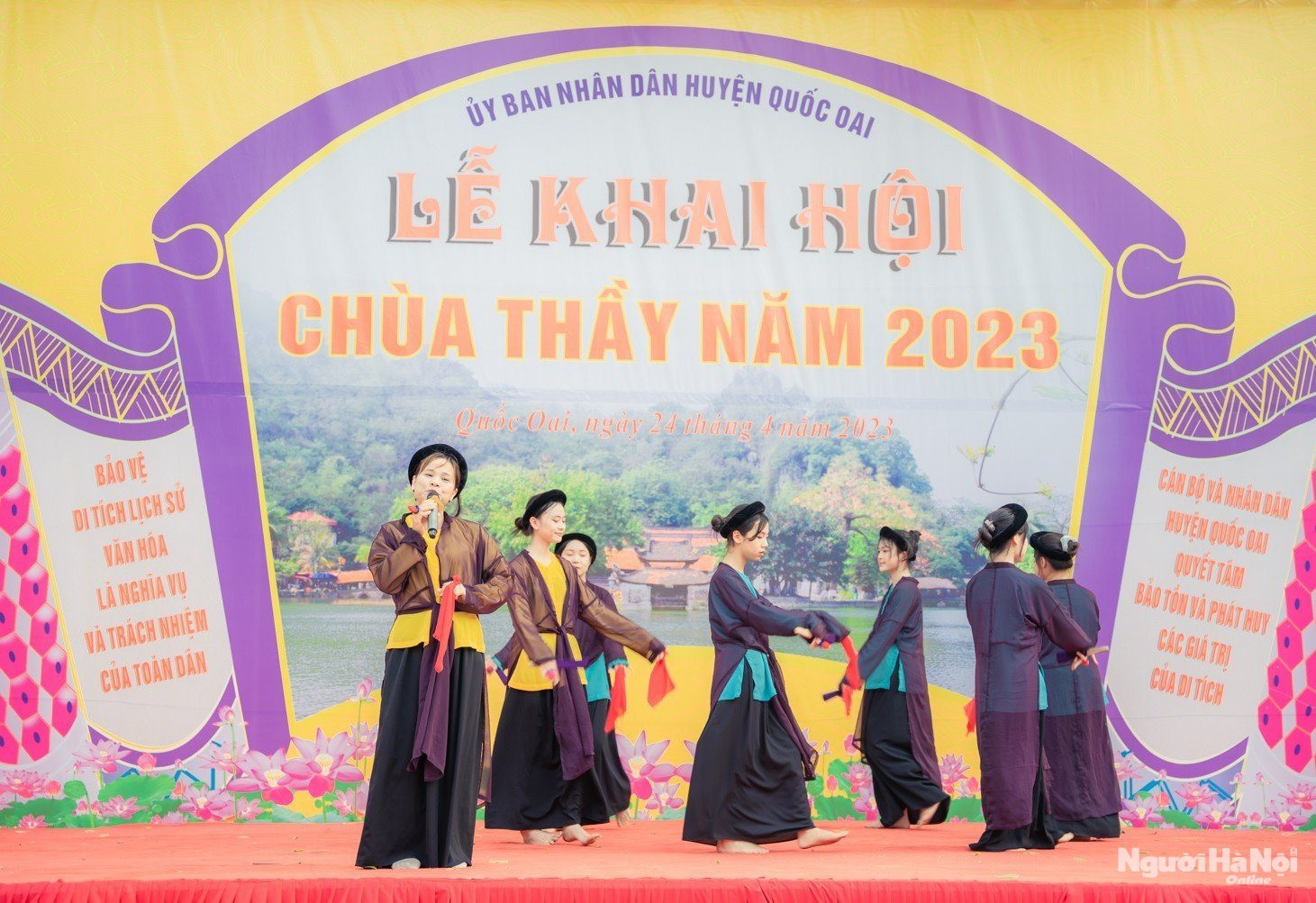
Members of the “Do” Singing Club from Liep Tuyet commune performing at the Thay Pagoda Festival 2023
Presenting a piece of “Do” singing for us, the people’s artisan Nguyen Thi Lan explained that “Do” singing comprises three styles: ceremonial singing (performed in temples), congratulatory singing, and performative singing (performed outside the temple courtyard). The congratulatory singing consists of 36 melodies, each lasting an entire hour for the completion of one song. Ceremonial singing is exclusive to the temple and cannot be taken elsewhere. Performative singing, on the other hand, is short, typically only a few minutes, often involving call-and-response, showcasing the beauty of daily life, communal bonds, and marital affection.
The distinctiveness and uniqueness of “Do” singing lie in its lack of musical instruments, relying solely on bamboo clappers and fans as props. Despite its simplicity, “Do” singing conveys to the listeners the sweet, warm, and melodious tunes of the native land of Doai. According to ancient traditions, participants in “Do” singing must come from scholarly families, be unmarried young women or men, and have no bereavements in their families. The content of “Do” singing reflects the laborers’ perceptions of nature and their aspirations for a prosperous and happy life.
Coexisting with the lyrics are accompanying dance movements by the “consorts” (also referred to as female companions, representing specific roles). These movements seamlessly intertwine during the performance. A “Do” singing scene typically involves a “male” (one male role) singing and a “consort” performing supplementary dance moves. As the consort sings, she simultaneously dances, portraying activities such as flower picking, fan dancing, archery, tea harvesting, and bamboo weaving. “Do” singing shares common characteristics with folk genres directly related to agricultural production, traditional worship of deities, and praises for the contributions of one of Vietnam’s Four Immortals, as well as songs about labor and the simple life of the people.
…to the efforts of restoration and propagation of “Do” singing
The unique melodies of “Do” singing gradually fell into oblivion, facing the risk of being “buried” for nearly 70 years. Those who still possessed the musical scores and ancient “Do” singing melodies were either scarce or had passed away. In 1989, the Department of Culture – Information of Ha Tay province (former), the Cultural Center of Quoc Oai district, and the local government of Liep Tuyet commune initiated the collection, gathering, and restoration of the “Do” singing heritage. The person directly assigned to carry out this task was none other than Nguyen Thi Lan, the current folk artist and chairwoman of the Women’s Union of Liep Tuyet commune.
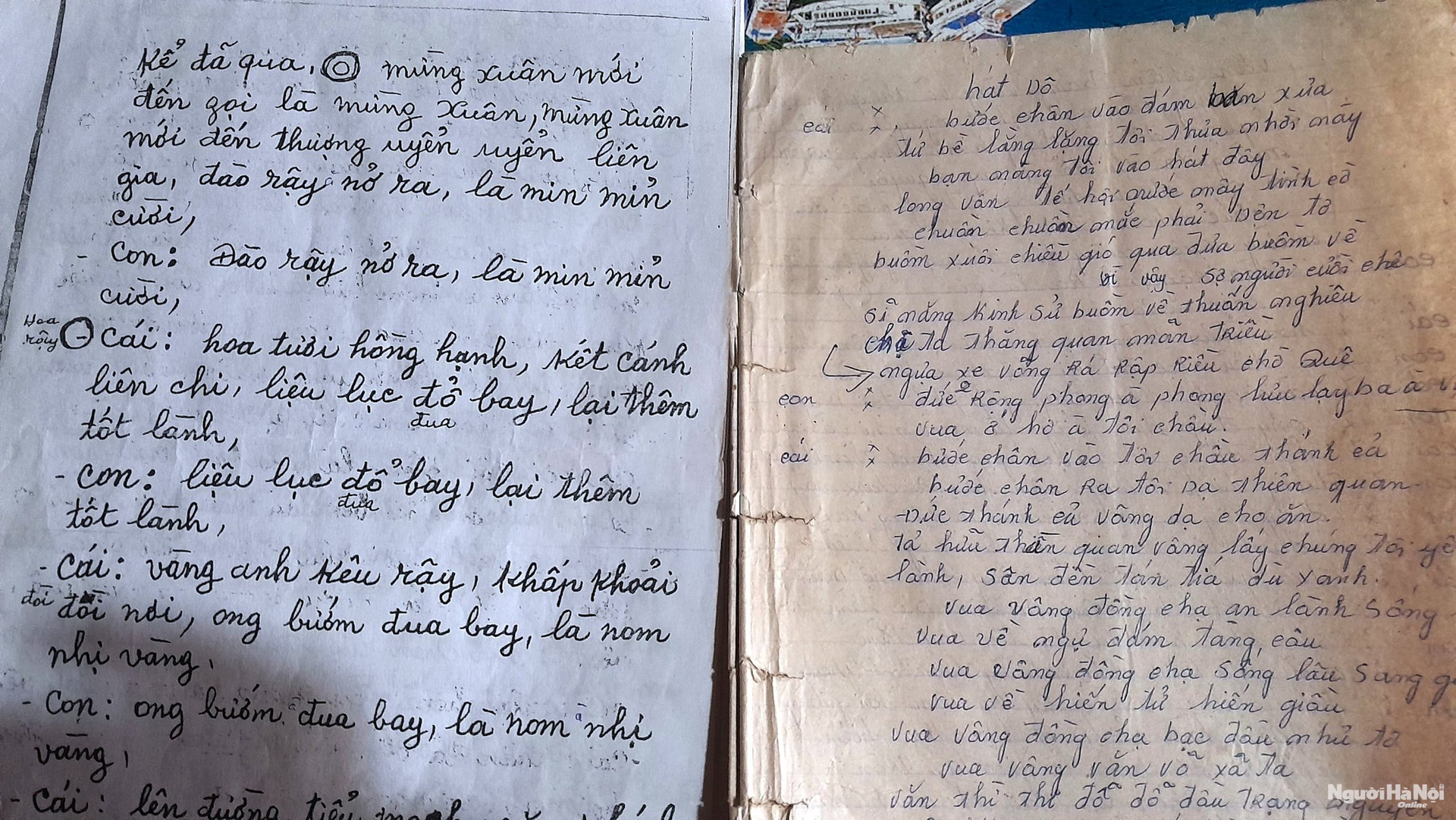
A handwritten copy of “Do” songs passed down by some elderly individuals to the people’s artisan Nguyen Thi Lan in 1989.
In 1989, the people’s artisan Nguyen Thi Lan happened to receive instruction in “Do” singing from an elderly individual. Listening to the elders sing ancient songs, Lan took out a pen and paper to transcribe. After three days and nights, she completed the transcription of the “Do” songs that the elderly individual still remembered. “I remember having to preserve and take care of it carefully because this is the legacy left by our ancestors. Shortly afterward, the elder passed away peacefully,” shared the people’s artisan Nguyen Thi Lan.
Alongside the process of collecting and gathering melodies, the people’s artisan Nguyen Thi Lan mobilized young people and families to allow their children to learn to sing. Despite the gossip and skepticism, with people saying it was “ghost-induced” and “taking home trouble and communal punishment,” Nguyen Thi Lan remained determined not to give up.
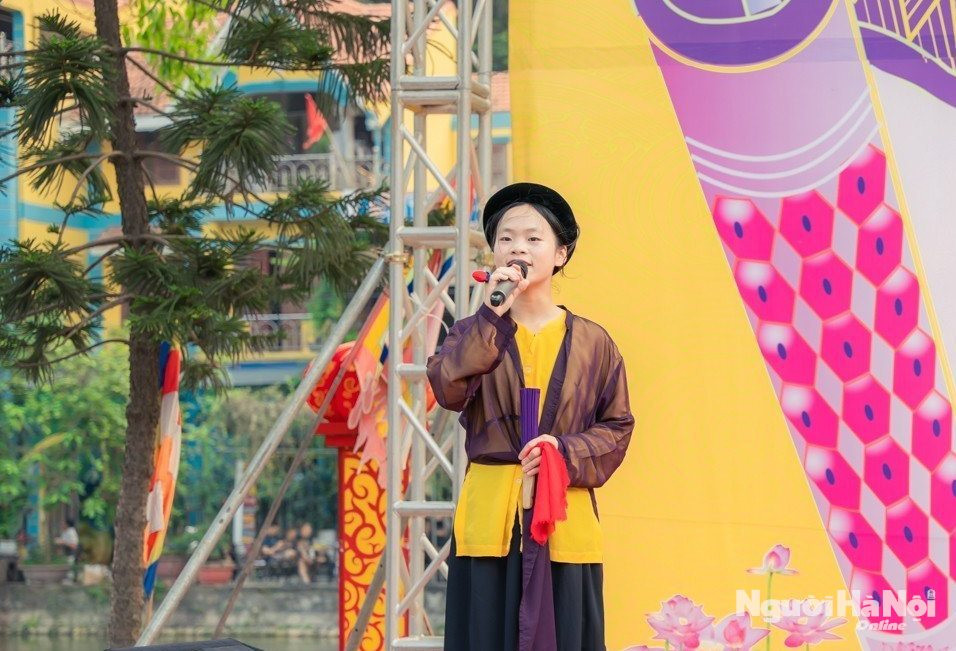
Over 1,000 young individuals in Liep Tuyet have been instructed in “Do” singing.
By the year 1999, the “Do” Singing Club of Liep Tuyet commune was established with 30 members ranging from middle-aged and above, led by the people’s artisan Nguyen Thi Lan. Despite their advanced age, the members have exerted utmost effort in passing down the tradition to their descendants, contributing to the revival of the “Do” singing style in their homeland. The people’s artisan Nguyen Thi Lan mentioned that currently about 60% of the local population understands the significance and knows some “Do” singing melodies. The commune’s “Do” Singing Club has also undergone rejuvenation, currently comprising 30 young members aged 11 to 16 actively participating in club activities.
“We have organized numerous teaching sessions, and to date, we have trained over 1,000 young individuals who now know how to sing “Do”. These youngsters go to school in the morning, work in the cornfields in the afternoon, but in the evening, they enthusiastically gather to practice singing. Additionally, the “Do” Singing Club has been invited to perform at various artistic programs. In 2008, I was personally invited to Malaysia to introduce the art of “Do” singing,” proudly stated the people’s artisan Nguyen Thi Lan.
Within the country, the “Do” Singing Club has showcased its talents at events such as the Festival at Thay Pagoda, the Hanoi Opera House, the Ly Thai To Statue area; providing performances for tourists at La Thanh Hotel, Dewoo, and in various provinces and cities including Thanh Hoa, Bac Ninh,” added the people’s artisan Nguyen Thi Lan with a confident voice.
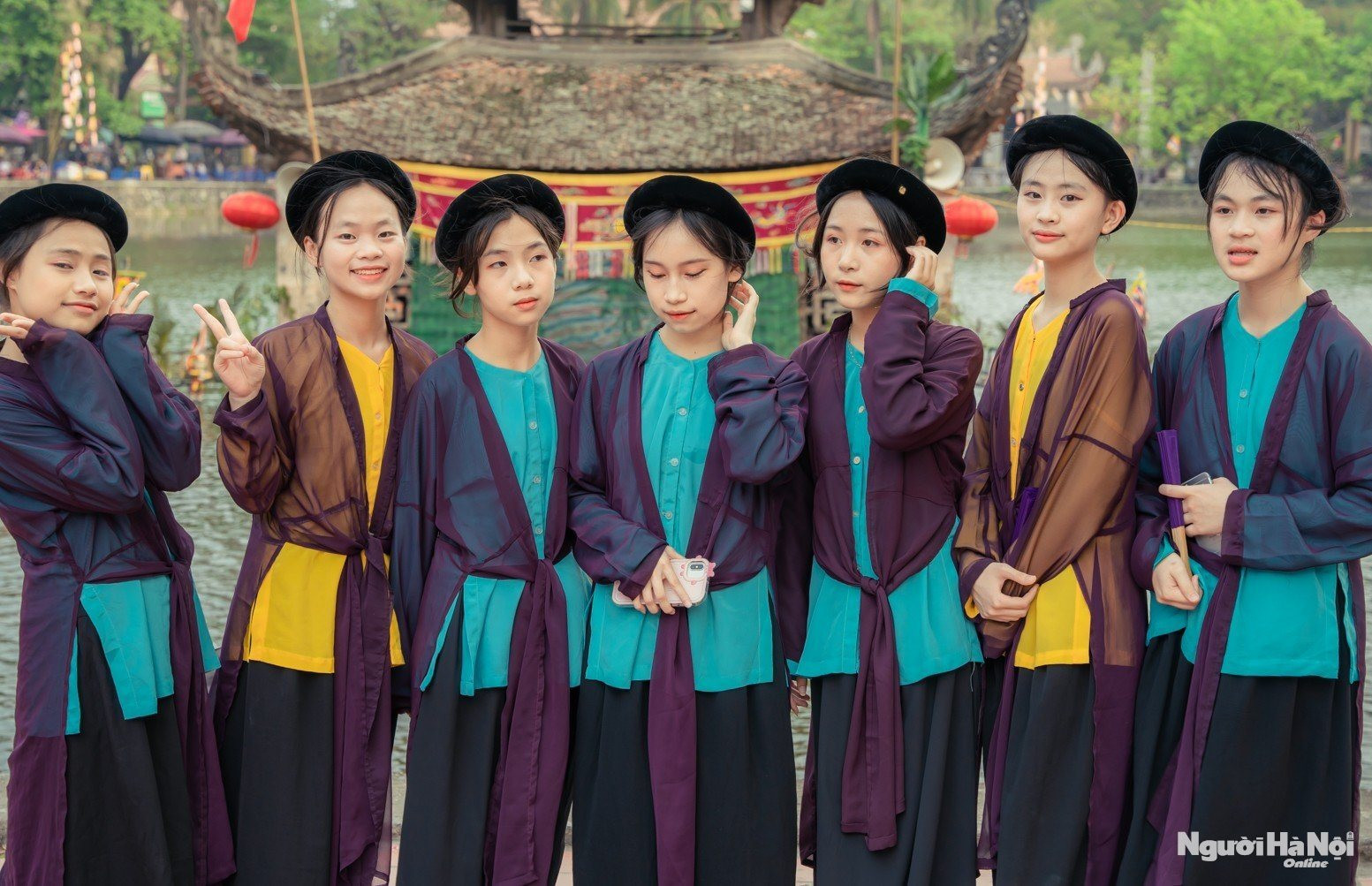
The young members of the “Do” Singing Club in Liep Tuyet are aged between 11 and 16.
According to the head of the “Do” Singing Club in Liep Tuyet commune, in recent times, Hanoi City, along with the Department of Culture and Sports, the Department of Culture and Information of Quoc Oai district, and the local authorities, has shown concern and taken actions to preserve and promote the value of “Do” singing. Consequently, from the risk of being “buried,” “Do” singing has not only survived but also flourished, demonstrating its robust vitality. In early 2023, the Ministry of Culture, Sports and Tourism officially recognized “Traditional Folk Performance Art – “Do” Singing” as part of the National Intangible Cultural Heritage. The official recognition ceremony is scheduled to take place during the Khanh Xuan Temple Festival in 2024.
Kien Hai
Nghệ thuật trình diễn dân gian hát “Do”: Vàng son còn mãi, (nguoihanoi.vn)

